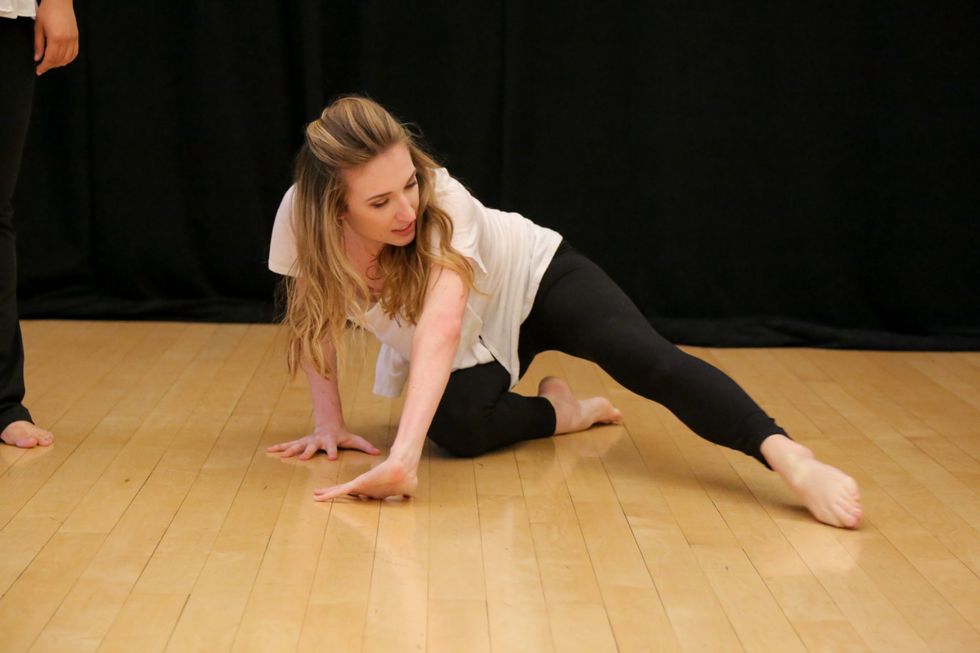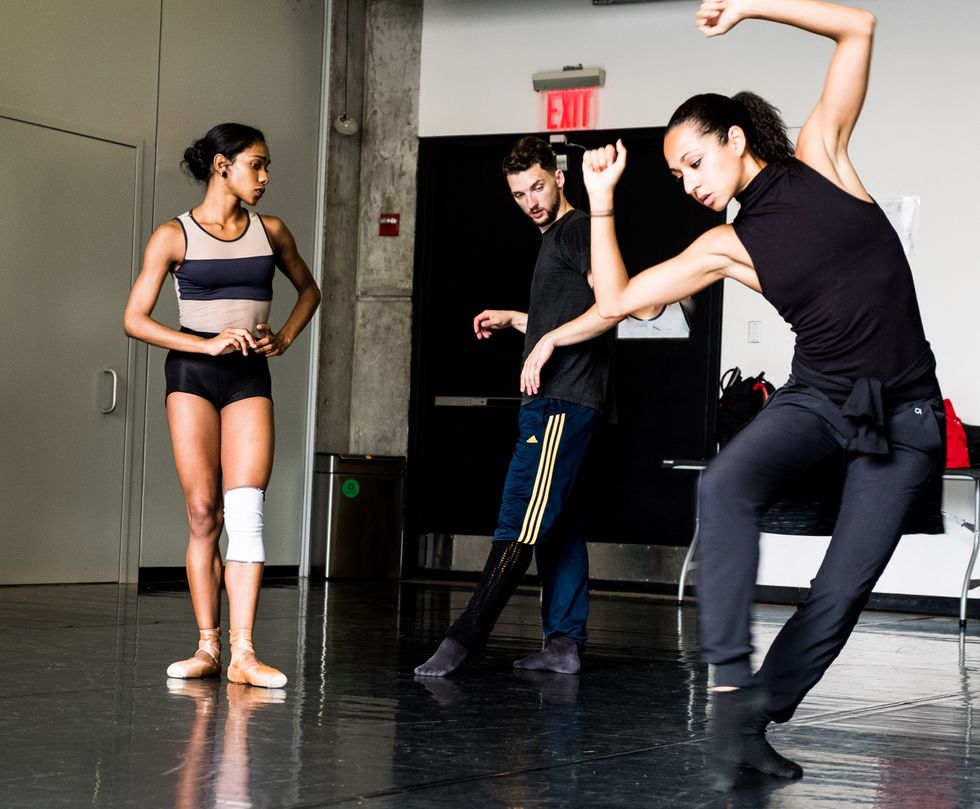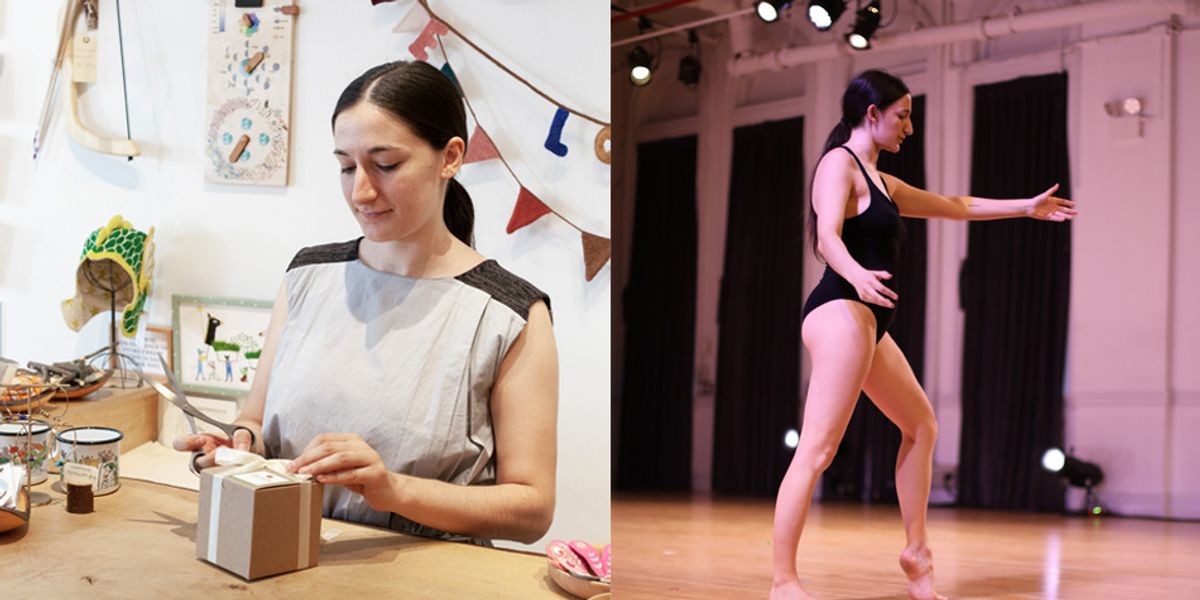Yes, It Is Possible to Work Full Time and Be A Professional Dancer
Few dancers are able to make a comfortable living from their creative pursuits alone. Many rely on non-dance freelance work or multiple part-time gigs, fearing that a full-time job would take too much time away from their dancing. However, plenty of artists manage to balance full-time day jobs with fulfilling dance careers, opting for the security, benefits and opportunity to learn new skills.
Shannon McMullan
 McMullan works at an engineering firm and performs with two companies. Photo by Stephen Delas Heras, courtesy McMullan
McMullan works at an engineering firm and performs with two companies. Photo by Stephen Delas Heras, courtesy McMullan
Her dance gigs:
This fourth-generation Isadora Duncan dancer performs with Dances by Isadora and Dance Visions NY.
Her day job:
McMullan works at a large structural engineering firm in Manhattan. She oversees the company’s research and development initiatives, handles internal marketing and communications, and plans large-scale events. She works roughly 40 hours per week and receives benefits, including health insurance and a 401(k).
How she makes it work:
She rehearses mostly on the weekends, and if she needs to leave work early on occasion to go to a performance or rehearsal, she’s able to communicate with her colleagues to make it work. “I’ve been super-honest with my boss and company. They all know I’m a dancer, and they’re supportive of that,” she says.
Pros and cons:
“The biggest sacrifice is missing out on intensives or going to technique classes in the middle of the day,” McMullan says. On the other hand, the job has allowed her to travel within the U.S. and abroad, and gives her the security of knowing she will always be able to pay her rent.
Dealing with doubters:
“I have had a lot of people criticize me for having a 9-to-5. They call my dance career a hobby,” she says. “That stereotype irks me. You learn so much from dance that you can implement in other places. And dancers shouldn’t shy away from doing that.”
Claudia Schreier

Schreier rehearsing Contra with Ballet Hispánico’s Dandara Veiga and Chris Bloom. Photo by Dmitry Beryozkin, courtesy Schreier
Her dance gigs:
Schreier is a contemporary ballet choreographer whose upcoming projects include commissions from Dance Theatre of Harlem and the ABT Studio Company.
Her day job:
She worked at Alvin Ailey American Dance Theater for seven years as a marketing assistant and later as manager of editorial content. Her responsibilities included social media content creation, advertising and branding strategy; editorial and creative direction; and contributing to two website redesigns.
Worlds colliding:
“For over six years, no one at my job knew I was choreographing,” Schreier says. That changed when she won the Breaking Glass Project’s choreography competition in 2014. The prize was an evening-length performance at the Ailey Citigroup Theater. “I took a week of vacation to rehearse, but I was still renting studio space in the building. I would walk in, say hi to my co-workers, and then go to the studio instead of the office,” she says.
Saying good-bye:
By the end of Schreier’s time at Ailey in 2017, she was using all of her vacation days for dance. She left to enter a semester-long, full-time fellowship at the Center for Ballet and Arts at NYU. Schreier has been paying the bills with choreography and the support of donors ever since.
Her advice:
Use skills from your full-time gig to enrich your dance career. Working for Ailey taught Schreier how to manage the business of being a choreographer. “I don’t think I would be where I am without that experience,” she says.
Anna Rogovoy
 Rogovoy took a full-time gig after finding that the freelance life didn’t work for her. Photo by Kathryn Butler, courtesy Rogovoy
Rogovoy took a full-time gig after finding that the freelance life didn’t work for her. Photo by Kathryn Butler, courtesy Rogovoy
Her dance gigs:
Rogovoy is a choreographer and freelance performer. Most recently, she performed a solo two years in the making at New Dance Alliance’s Performance Mix Festival, and she will appear in a new work by Mina Nishimura in December at Gibney.
Her day job:
She manages an independent toy shop in Brooklyn, working roughly 35 hours per week, Tuesday through Saturday. The job does not include benefits, but it does have some flexibility. She comes in late twice per week, using the free mornings to take class, and usually schedules rehearsals on her days off from the store.
Why dance admin jobs didn’t work:
Rogovoy used to do part-time or project-based work in arts administration and company management, but found she either wasn’t making much money or was going on lengthy, demanding tours. “Those long days were often in a theater, close to dance, but very much on the sidelines in a way that I ultimately found frustrating,” she says.
Why she went full-time:
“It took me a long time to accept that the freelance hustle doesn’t work for me,” she says. “I wasn’t able to be the person and artist I wanted to be while I was scrambling from gig to gig.”
Lessons learned:
Rogovoy still uses the skills she learned as a dance company manager. “I haven’t completely left that kind of work,” she says. “I’ve just made myself my main client.”




